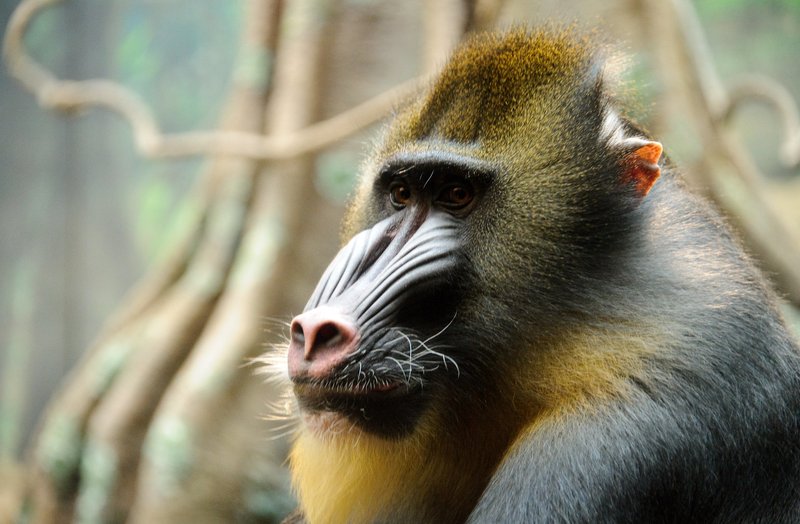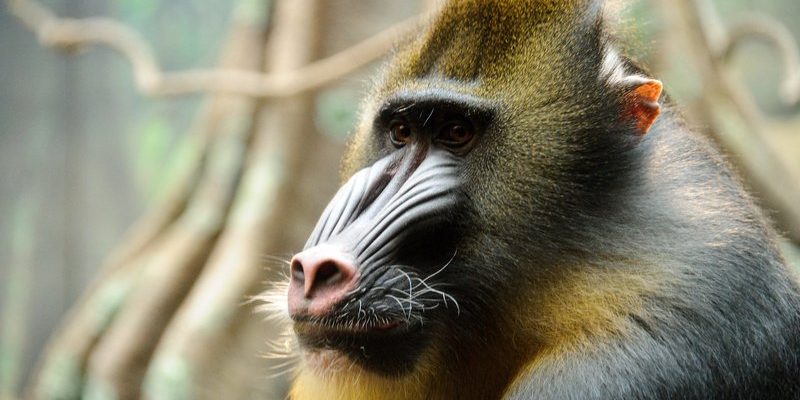
Imagine a vibrant jungle teeming with wildlife, where the air buzzes with sounds of chirping birds and rustling leaves. In this lush setting, the mandrill thrives, swinging through the trees and foraging for fruits, seeds, and roots. Yet, this picturesque scene is fading. The mandrill is not just a pretty face; it’s an essential part of its ecosystem. So, what’s putting pressure on these gorgeous animals? Here’s the scoop.
The Current Status of Mandrills
To understand if the mandrill is endangered, we need to look at its current conservation status. The International Union for Conservation of Nature (IUCN) classifies the mandrill as Vulnerable. This means they are at risk of extinction if pressures on their populations continue to escalate. Mandrills are found mainly in the rainforests of Gabon, Cameroon, and the Republic of Congo, where they live in troops that can number over a hundred individuals.
Their vulnerability is linked to several factors. Major threats include habitat loss due to logging and agricultural expansion. When forests are cleared, not only do mandrills lose their homes, but they also face increased competition for food and mates. Sadly, some mandrills are hunted for bushmeat, further endangering their numbers.
What’s Causing Their Decline?
Now that we’ve established their vulnerable status, let’s talk about what’s causing this decline. First and foremost, deforestation is a massive issue. As humans expand into natural habitats for farming or timber, mandrills lose the trees they rely on for shelter and food. Imagine moving to a new house and finding out that there’s no grocery store nearby; it’s tough, right? That’s exactly what’s happening to the mandrills.
Another factor to consider is poaching. In some regions, mandrills are hunted for their meat. Although it may seem like a small issue, when many people rely on hunting for food, it adds up. Additionally, mandrills are sometimes captured for the illegal pet trade, which can disrupt their social structures and lead to more losses.
Finally, climate change is a growing concern. Rising temperatures and changing rainfall patterns can alter the ecosystems that mandrills depend on. It’s like throwing a wrench into the gears of a well-oiled machine—the whole system can start to fall apart.
The Role of Conservation Efforts
Conservationists are stepping up to address these challenges. Various organizations and governments are working to protect mandrill habitats through protected areas and national parks. These efforts help to ensure that mandrills have safe spaces to thrive without the threat of deforestation or hunting.
Additionally, education plays a huge role in conservation. By raising awareness among local communities about the importance of preserving wildlife, people can learn to live harmoniously with nature. Here’s the thing: when locals understand the value of these animals, they’re more likely to protect them. Involving communities in conservation makes a meaningful impact.
Moreover, ecotourism can be a lifeline for mandrills. When tourists come to see these magnificent animals in their natural habitat, it creates a financial incentive for locals to preserve their environment. It’s a win-win—communities benefit economically while the mandrills get a fighting chance.
Success Stories in Mandrill Conservation
Believe it or not, there have been some heartwarming success stories when it comes to mandrill conservation. Protective measures in Gabon, for example, have shown promising results. Here, conservationists have established national parks specifically designed to safeguard the mandrill’s habitat. These areas allow the animals to flourish away from human disturbances.
In some cases, local communities have been actively involved in conservation efforts. For example, there are programs that train locals to become wildlife rangers. These rangers patrol the forests, monitor mandrill populations, and educate others about the importance of protecting their natural heritage. This community involvement can make a remarkable difference.
Furthermore, scientific research is helping us understand mandrills better. By studying their behaviors, diets, and social structures, researchers can develop targeted conservation strategies. This data is crucial for making informed decisions on how to protect these creatures moving forward.
How You Can Help Mandrills
Feeling inspired? You don’t have to be a scientist to make a difference for mandrills. Here are some simple steps you can take to help:
- Raise Awareness: Share articles or information on social media to spread the word about the plight of mandrills.
- Support Conservation Organizations: Consider donating to groups that are focused on protecting mandrills and their habitats.
- Practice Responsible Tourism: If you travel to areas where mandrills live, choose eco-friendly tours that promote conservation.
- Educate Yourself and Others: Learn about the wildlife around you and share that knowledge with friends and family.
Every little action counts, and when combined, they can lead to significant change.
So, is the mandrill endangered? Yes, they are vulnerable, and their future depends on our actions today. It’s a challenging time for these magnificent creatures, but with the right conservation efforts, education, and community involvement, there’s hope.
By understanding the threats they face and taking steps to protect their habitats, we can ensure that future generations will have the chance to marvel at these vibrant primates. Remember, protecting wildlife isn’t just about a single species; it’s about preserving the rich tapestry of life on our planet. Let’s work together to keep the mandrills swinging through the trees for years to come!

